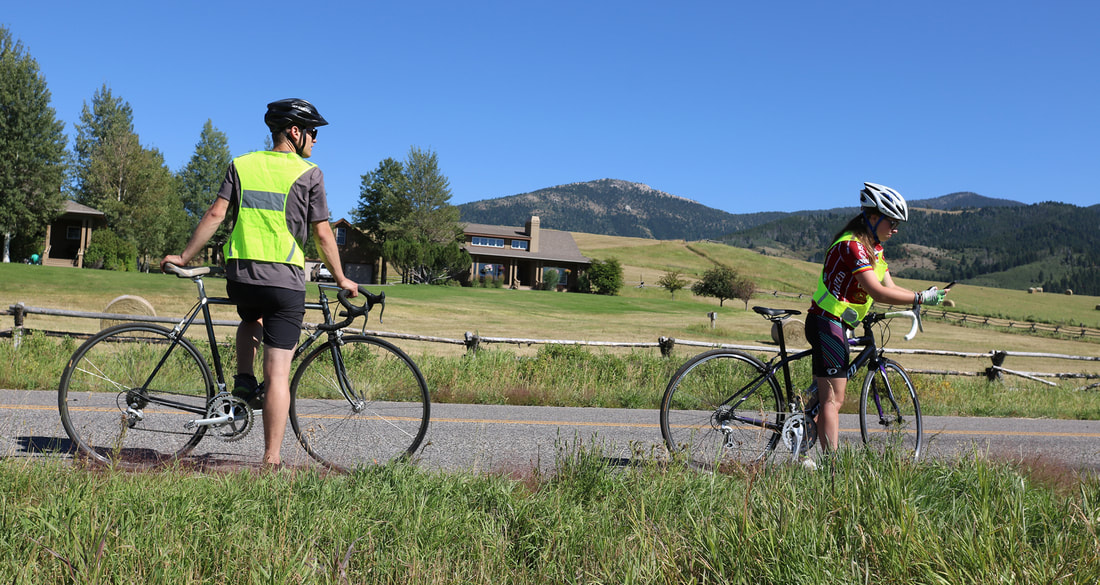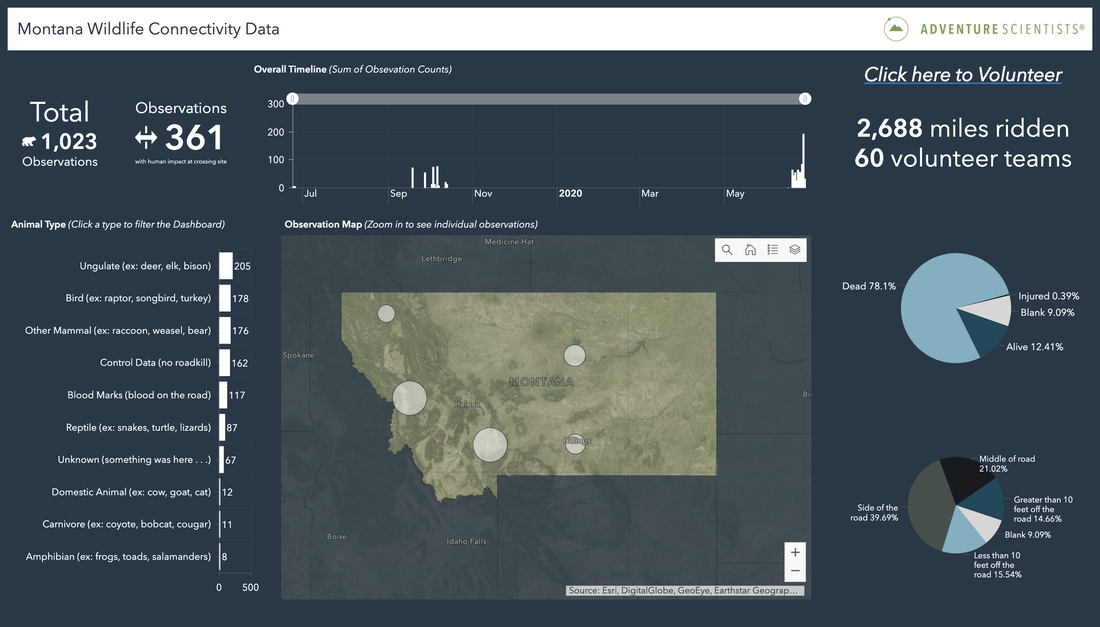
Cyclists photograph a road-killed animal for Adventure Scientists in Montana’s Gallatin Valley.
With some states easing COVID-related travel restrictions and closures, many outdoor enthusiasts are gearing up to get back outdoors with friends. The pandemic is far from over, of course, and social distancing presents a real challenge on narrow, often crowded trails. One sport that requires that protective bubble of space? Road cycling. Starting June 18, Adventure Scientists is offering a way for cyclists in Montana to get an outdoor cycling fix while simultaneously helping their communities and contributing to science.
Adventure Scientists is looking for volunteer cyclists for a scientific research project that can help save wildlife and human lives. Volunteers will cycle sections of Montana roads at set periods throughout the summer and fall, using a simple phone app to record data on wildlife sightings and roadkill along their route. This information, collected across more than 11,000 miles of Montana roads, will help highway and wildlife officials understand where wildlife are crossing roads and identify wildlife-vehicle collision hotspots. Ultimately, this will inform state-wide efforts to reduce wildlife-vehicle collisions – an issue that results in more than 365 million animals killed, 29,000 humans injured, and $8.4 billion in damages incurred annually in the United States alone.
|
How it works: volunteers apply to participate, select a time period, decide which 50-mile route (or routes) they would like to ride, and then record wildlife observations while cycling their route. Volunteers are required to ride with a partner and encouraged to maintain social distancing while cycling and traveling to their ride locations. Before setting off, they complete an online training that provides all of the information needed to successfully and accurately collect data. Adventure Scientists provides neon safety vests and additional project equipment.
|
2020
Ride Dates
June 18 – 27
August 7 – 16
September 18 – 27
|
Relying on road cyclists is not only a unique way to address the wildlife-vehicle collision problem; it’s also far more effective than car-based data collection. By traveling more slowly and quietly than vehicles, cyclists are more likely to see both roadkill and live animals. “[Cyclists] have a unique perspective… that allows us to see things that other people are not noticing,” says Tim Marchant, describing his experience volunteering during the fall 2019 season. “I highly recommend it to folks. It’s a nice way to use the bicycle for productive purposes.”
A real-time dashboard lets volunteers and others track observations made by project cyclists. Click the image to be taken to the dashboard.
For Dylan Malloy, volunteering changed his perspective when he’s behind the wheel as well as on his bike. “Even driving, I’m paying attention to… the [crossings] that wildlife are around,” explains Malloy, a cyclist who volunteered in Fall 2019. “Montana is this huge expanse of area, and there’s really not a ton of those crossings designated for animals.”
Routes shown in green on this map are available for volunteers to select. Red indicates already-claimed routes.
At a time when field research around the world has largely been brought to a standstill due to travel restrictions and social distancing requirements, cycling Montana roads gives volunteers a chance to help advance science that not only benefits their communities but can be scaled up to help reduce wildlife-vehicle collisions worldwide. The project also provides cyclists with new ways to keep up with fellow cyclists who share an interest in making Montana a safer place for people and wildlife. Throughout the duration of the three-year study, volunteers can track data in real-time as it is submitted, chat with cyclists across the state via an online forum, and engage in socially-distant opportunities to connect with fellow volunteers on the project.
Learn more about the project, check out our FAQs, or read our Q&A post to find out about the surprise wildlife sightings and other experiences of two of our 2019 volunteer cyclists.


